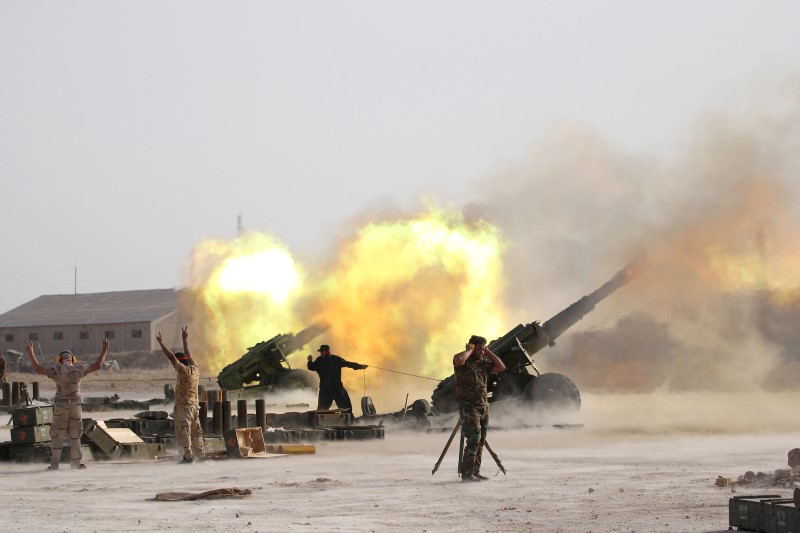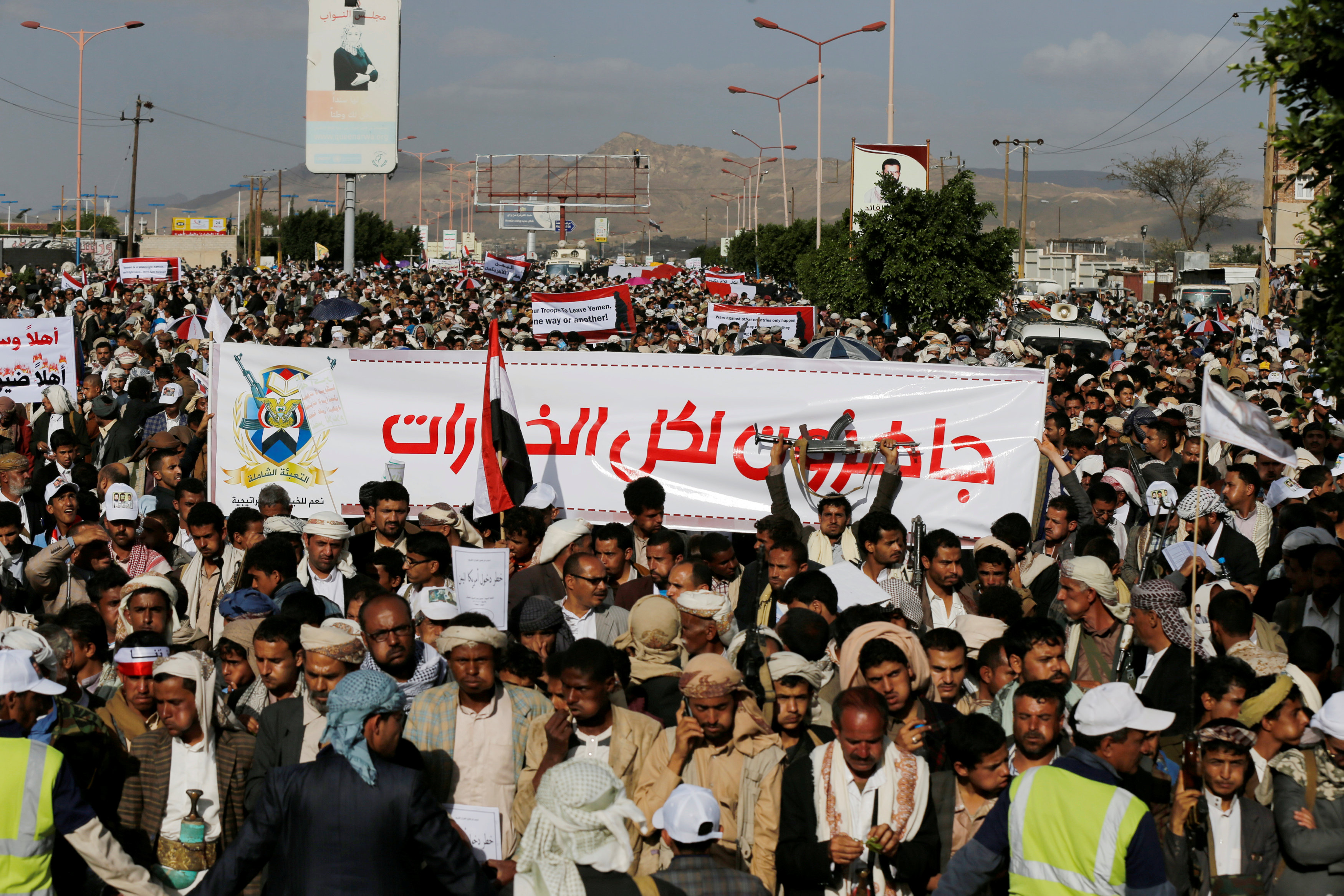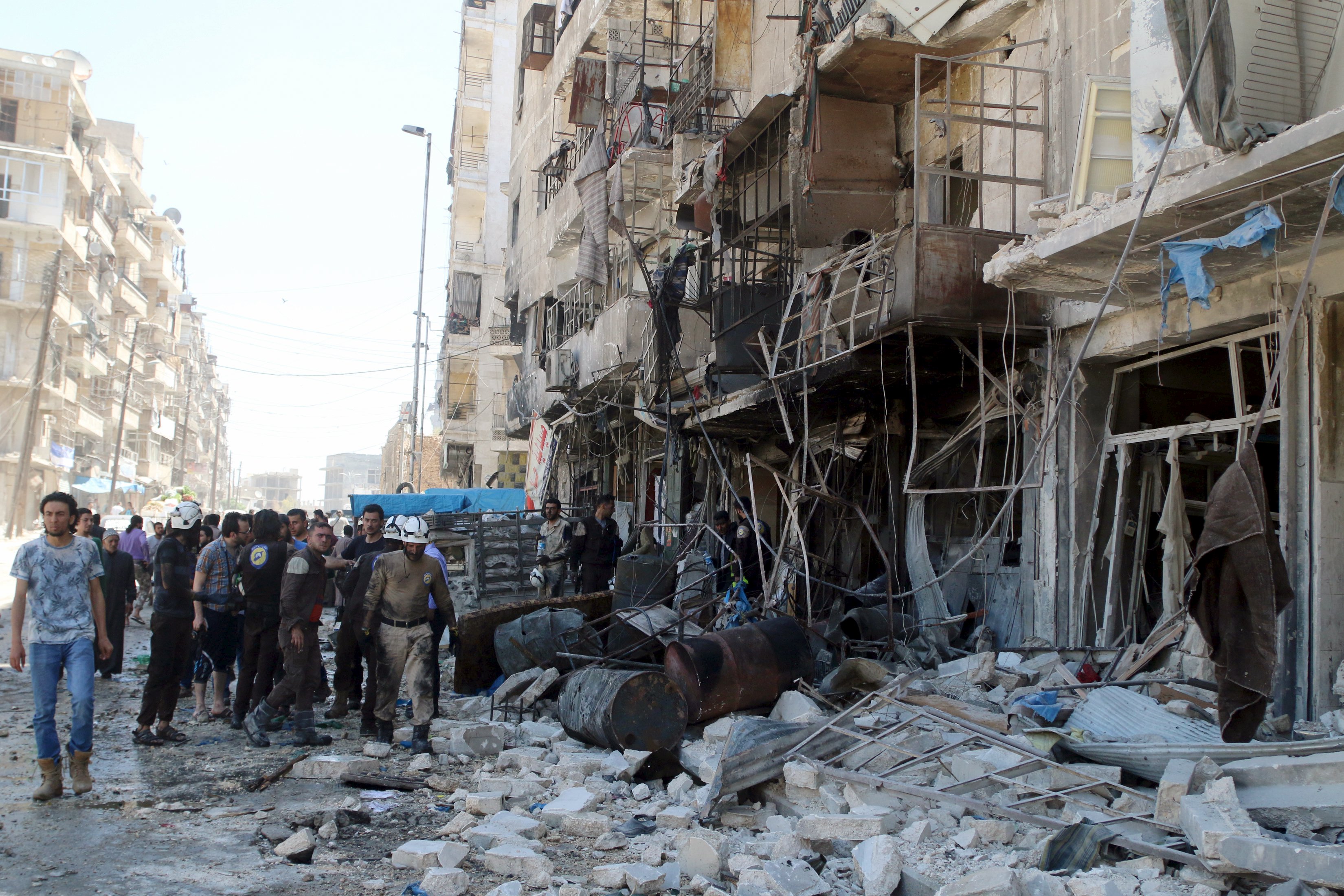
By Maher Nazeh and Phil Stewart
SOUTHERN OUTSKIRTS OF FALLUJA, Iraq/WASHINGTON (Reuters) – Islamic State insurgents faced major assaults on two fronts in both Iraq and Syria on Wednesday in what could prove to be some of the biggest operations to roll back their caliphate since they proclaimed it in 2014.
In Syria, U.S.-backed militia with thousands of Arab and Kurdish fighters were reported to have captured villages near the strategically-important Turkish border after launching a major operation to cut off Islamic State’s last access route to the outside world.
In Iraq, Prime Minister Haider Abadi ordered his troops to slow an advance at the gates of Falluja, Islamic State’s closest redoubt to the capital Baghdad, to limit harm to civilians, two days after the army poured into rural areas on the city’s outskirts.
Both operations are unfolding with the support of a U.S.-led coalition that has been targeting the ultra-hardline Sunni Muslim militants, who proclaimed a caliphate to rule over all Muslims from territory in the two neighboring countries.
The Syrian operation includes American special forces operating in advisory roles on the ground. In Iraq, the U.S.-led coalition has provided air support to government forces who are also assisted by Iranian-backed Shi’ite militia.
While there is no indication that the two advances were deliberately timed to coincide, they show how a variety of enemies of Islamic State have been mobilizing in recent months in what Washington and other world powers hope will be a decisive year of battle to destroy the group’s pseudo-state.
“LAST FUNNEL”
The Syrian operation, which began on Tuesday after weeks of preparations, aims to drive Islamic State from the last stretch of the frontier with Turkey it controls.
“It’s significant in that it’s their last remaining funnel” to Europe, a U.S. military official told Reuters. Islamic State has used the border for years to receive material and recruits from the outside world, and, more recently, to send militants back to Europe to carry out attacks.
An 80-km stretch of terrain north of the town of Manbij is the only part of the Turkish frontier still accessible to the militants after advances by Kurdish fighters and President Bashar al-Assad’s government elsewhere.
A small number of U.S. special operations forces will support the push on the ground to capture the “Manbij pocket”, acting as advisers some distance back from the front lines, U.S. officials said, discussing the plans on condition of anonymity.
“They’ll be as close as they need to be for the (Syrian fighters) to complete the operation. But they will not engage in direct combat,” the first official said.
The operation will also count on air power from the U.S.-led coalition, which pounded Islamic State positions near Manbij with 18 strikes on Tuesday.
The Syrian Observatory for Human Rights, a group that reports on the conflict there with a network of sources on the ground, said Islamic State had been pushed out of 16 villages near Manbij. U.S.-led air strikes in support of the ground operation had killed 15 civilians including three children near Manbij in the last 24 hours, the Observatory said.
The assault is being carried out by an alliance known as the Syria Democratic Forces (SDF), which is composed of a powerful Kurdish militia called the YPG, and Arab combatants that have allied themselves with it.
The group, set up last year, is the main ground force to receive U.S. backing in Syria, where Washington opposes Assad’s government and has had difficulty finding capable allies on the ground in the past.
U.S. officials stressed that most of the fighting near Manbij would be carried out by Arabs, an emphasis apparently aimed at Turkey, which considers the Kurdish YPG to be foes.
“After they take Manbij, the agreement is the YPG will not be staying … So you’ll have Syrian Arabs occupying traditional Syrian Arab land,” the first U.S. official said.
However, the Observatory described much of the fighting so far as carried out by Kurds.
The operation is taking place ahead of an eventual push by the U.S.-backed Syrian forces toward Raqqa, Islamic State’s de facto Syrian capital, which, alongside Iraq’s northern city of Mosul is one of two main objectives to bring down the caliphate.
U.S. President Barack Obama has authorized about 300 U.S. special operations forces to operate on the ground inside Syria to help coordinate with local forces. In a reminder of the risks, one U.S. service member was injured north of Raqqa over the weekend, the Pentagon said.
A five-year-long, multi-sided civil war in Syria, in which global powers back enemy sides, has made it impossible to coordinate a single campaign against Islamic State there.
The U.S.-backed advance comes some weeks after Assad government troops, with Russian and Iranian support, recaptured the ancient city of Palmyra from Islamic State.
FALLUJA PAUSE
In Iraq, where Abadi’s Shi’ite-led government enjoys military backing both from the United States and Washington’s regional adversary Iran, the decision to pause at the gates of Falluja postpones for now what is expected to be one of the biggest battles ever fought against Islamic State.
“It would have been possible to end the battle quickly if protecting civilians wasn’t among our priorities,” Abadi told military commanders at the operations room near the front line in footage broadcast on state television. “Thank God, our units are at the outskirts of Falluja and victory is within reach.”
Falluja has been a bastion of the Sunni Muslim insurgency against both the Shi’ite-led Baghdad government and U.S. troops, who fought the biggest battles of their 2003-2011 occupation there. Islamic State fighters, also known as ISIS, ISIL or Daesh, raised their flag in the city in 2014 before sweeping through Iraq’s north and west.
Abadi first announced plans to assault Falluja 10 days ago. But with 50,000 civilians still believed trapped inside the city, the United Nations has warned that militants are holding hundreds of families in the center as human shields.
After heavy resistance from Islamic State, the troops have not moved over the past 48 hours, keeping positions in Falluja’s mainly rural southern suburb of Naimiya, according to a Reuters TV crew reporting from the area.
Explosions from shelling and air strikes as well as heavy gunfire could be heard on Wednesday morning in the city that lies 50 km (30 miles) west of Baghdad.
Falluja is the second-largest Iraqi city still under control of the Sunni militants after Mosul. Abadi’s initial decision to assault Falluja seems to have gone against the plans of his U.S. allies, who would prefer the government concentrate on Mosul.
“You do not need Falluja in order to get Mosul,” a spokesman for a U.S.-led anti-IS coalition, U.S. Army Colonel Steve Warren, said in a phone interview 10 days ago when the government first announced its plans to recapture Falluja.
However, Falluja is Islamic State’s closest bastion to Baghdad and is believed to be the base from which militants have staged a campaign of suicide bombings in the capital, increasing pressure on Abadi to act to improve security.
FLEEING CIVILIANS SCREENED
Although most of Falluja’s population is believed to have fled during six months of siege, 50,000 people are still thought to be trapped inside with little food.
“The city is inaccessible for assistance and market distribution systems remain offline,” the United Nations’ World Food Programme said. “The only food available does not come from the markets, but from the stocks that some families still have in their homes.”
The military has been detaining men and boys older than 12 who leave the city, to screen them for Islamic State fighters.
“Don’t treat us like we are Daesh,” said 54-year-old Mahdi Fayyadh, among hundreds of families who escaped the city and were now taking shelter in a school.
Fayyadh, who lost a leg to diabetes while under Islamic State’s rule due to a lack of medication, said he fled the city with 11 family members after the assault began. Relatives helped him walk on crutches until they reached army lines, when the other men in the group were taken away.
“I already lost a leg,” Fayyadh said, a battered pair of crutches leaning against his shoulder. “I ask all the good people to not treat us like they (the militants) treated us.”
U.S. officials caution that territorial gains will not spell the end of Islamic State, which has established itself outside of its self-declared caliphate in Iraq and Syria, spreading to Libya, Afghanistan and beyond.
“It would be premature to say that the gains in Syria, even if they’re sustained, will spell defeat for ISIL, any more than the pummeling of al Qaeda in Pakistan has meant the end of that group,” said one of the U.S. officials.
(Additional reporting by John Davison in Beirut, Maher Chmaytelli and Ahmed Rasheed in Baghdad; Writing by Peter Graff; Editing by Mark Heinrich)











